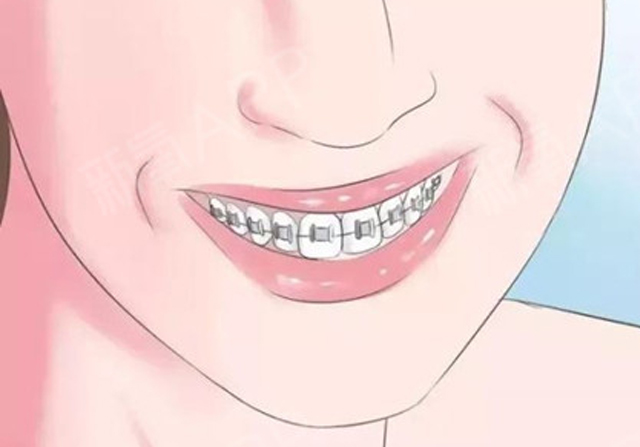 Open wechat
Open wechat
Is "braces face" really caused by orthodontics?
There are always some people who "deviate" after tooth correction, such as higher cheekbones and sunken cheeks, which is the performance of the so-called "braces face".
So what is a braces face?
Simply put, in the process of correction, there may be some phenomena, such as depressed cheeks, prominent cheekbones, sunken temples, thinner face, deepened legal lines and so on.
In fact, there is no need to worry too much. The face of braces occurs to a few people who correct their teeth, that is, not everyone can have "braces face"!
The "braces face" is caused by many factors, mainly due to the following reasons:
masticatory function decline
In the process of Orthodontics, some friends will naturally reduce their diet or eat some soft food because of the pain after tooth exertion, and the reduction of chewing will cause atrophy of masseter muscle and temporal muscle ~ the main masticatory muscles responsible for lifting the mandible are temporal muscle and masseter muscle
The direct consequence of masseter atrophy is that the mandibular angle will become soft and the face will become smaller, just like the effect of "thin face needle", which is also the dream of many female friends, but it is not a good thing for patients with thin face ~ masticatory muscles, in addition to masseter muscles on both sides of the mandible, there are temporal muscles in the temple. The cheeks and temples are thin, and the cheekbones are prominent.
Normal aging changes
After the age of 25, women will face the problems of facial fat, reduced skin elasticity and facial relaxation. Generally, they need to be corrected for at least two years. During this period, they are in the normal aging period. If they have braces face, it is largely because you are aging... People with thin and long face or high cheekbones are more likely to have problems of prominent cheekbones and concave cheeks.
Emaciation
Orthodontics is to align the teeth slowly under the action of long-term and continuous orthodontic force. In the process of alignment, tooth acid is certain, but everyone's "acid" degree and time are different. When eating, it is particularly obvious that you can't be as happy as before. You start to eat less spontaneously and choose foods that are easy to chew. Eating less, facial muscle fat reduction, such as "Apple muscle" atrophy, may also appear the phenomenon of facial depression.
How to avoid "braces face"?
Now that we have realized that "braces face" mainly comes from the reduction of muscle and fat, we should realize that it itself is an aging change. After the age of 20, even without orthodontics, facial fat will gradually decrease. If you are under the age of 20, you hardly need to worry about "braces face", because the "baby fat" on your face is enough to fight.
On the other hand, even without orthodontics, weight loss and weight loss will have facial changes similar to "braces face". But if you are a lovely fat man and have an enviable babyface, why worry about "braces face"?
Then, the only people who should worry about "braces face" are those over 20 years old, thin, with high cheekbones or sunken temples. Even these friends do not need to regard "braces face" as a scourge. According to rough statistics, less than 5% of adult female patients in China have "braces face" phenomenon, which belongs to "small probability event".
How to prevent "braces face"?
First of all, since muscle atrophy is the main reason, exercise the masseter muscle regularly every day. Some people will ask: "since it is to exercise the masseter muscle, is it better to bite up and down directly with your teeth every day?"
That's wrong. If you do this, your braces will be laid off in advance! Although the bite force is large, the strength is uneven. It's difficult to make each tooth bear the force evenly only by biting with the upper and lower teeth. Not only can it not help, but it may make the braces "hurt", not to mention exercising the masseter muscle.

